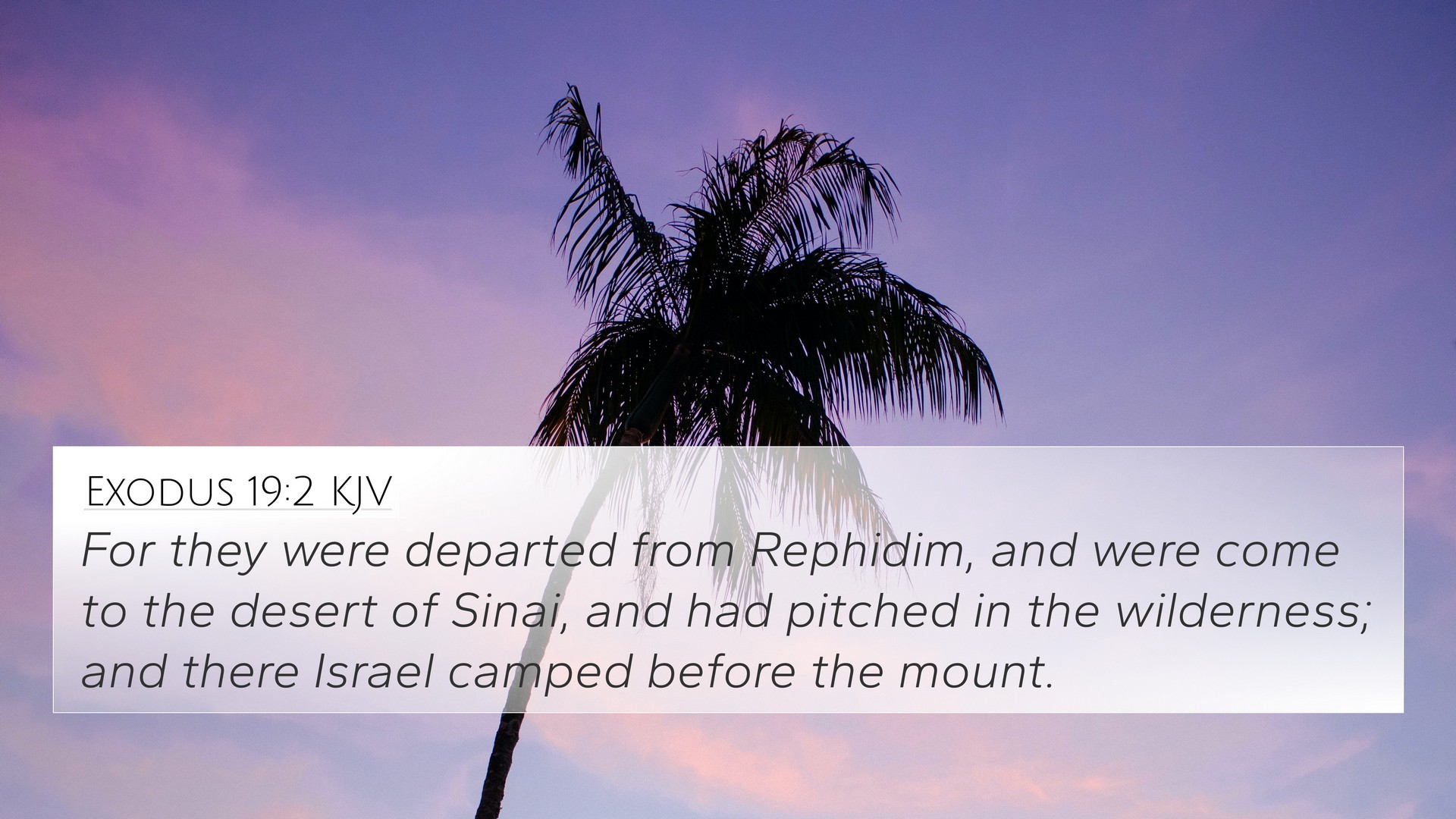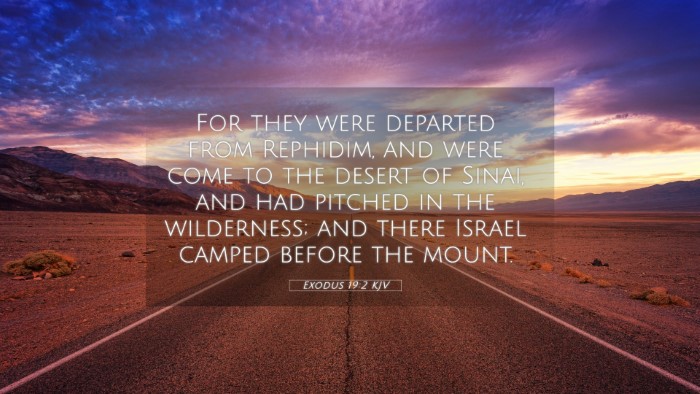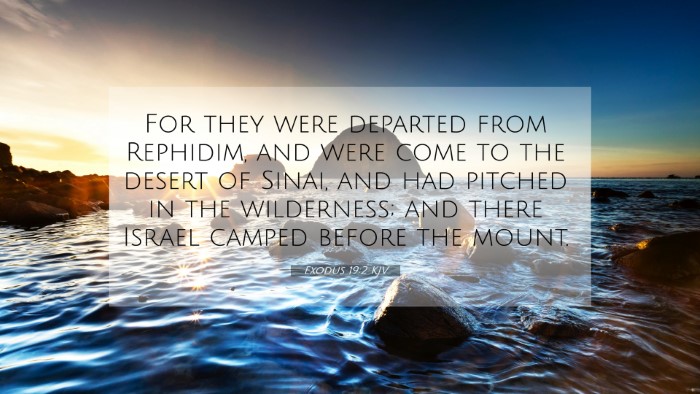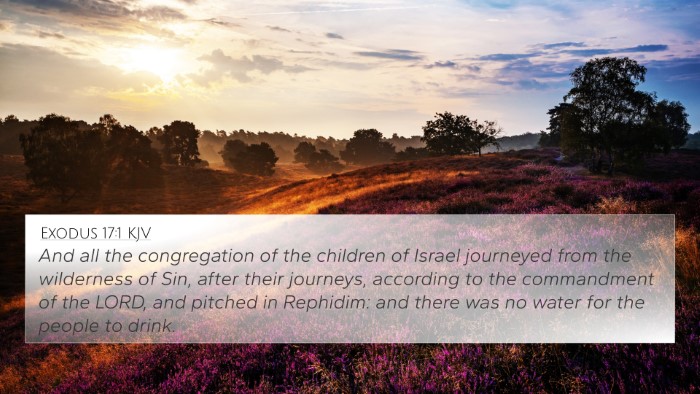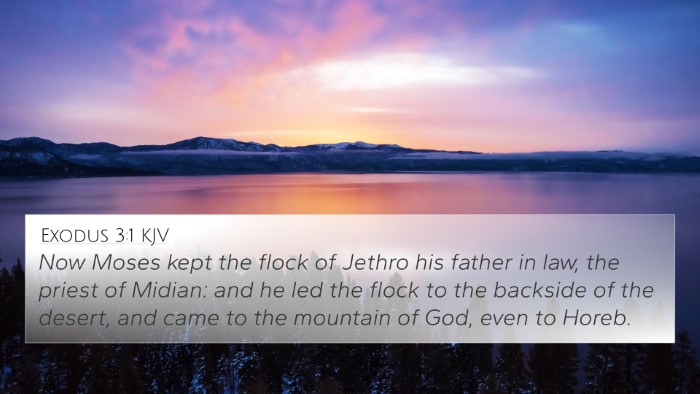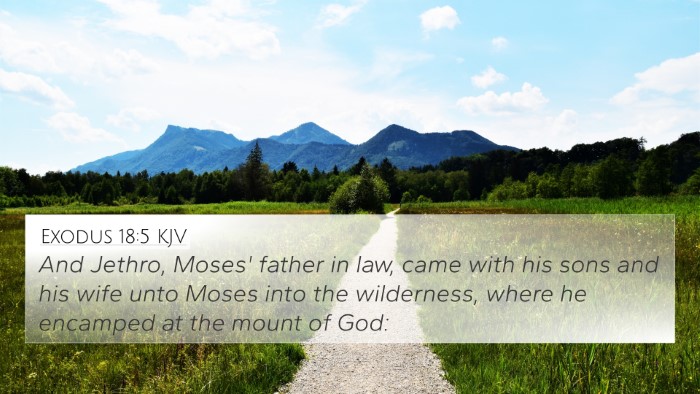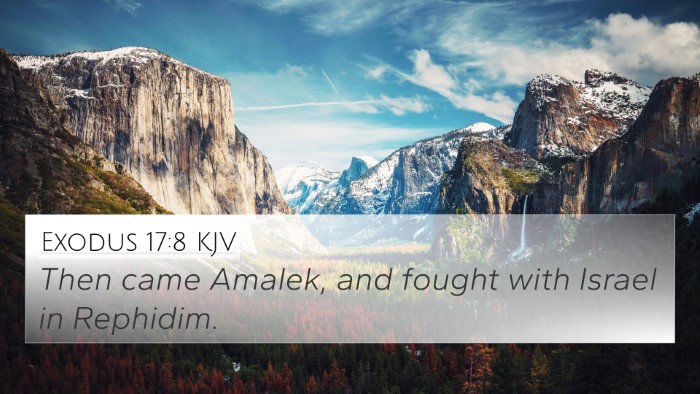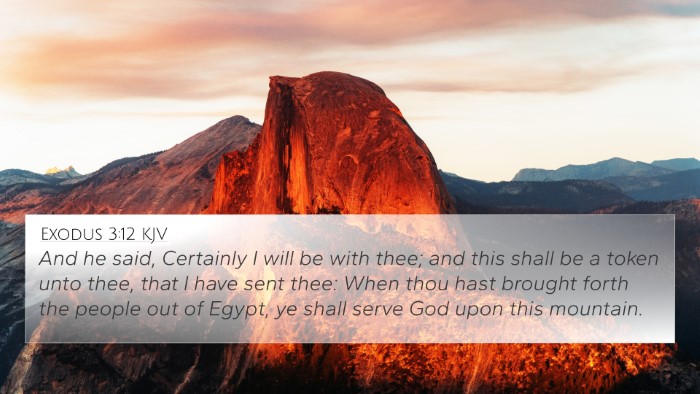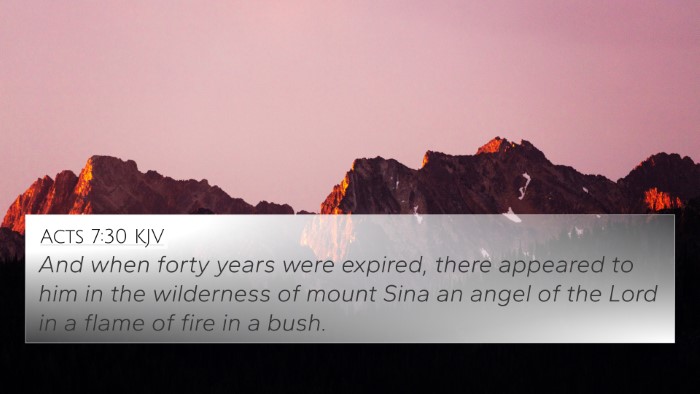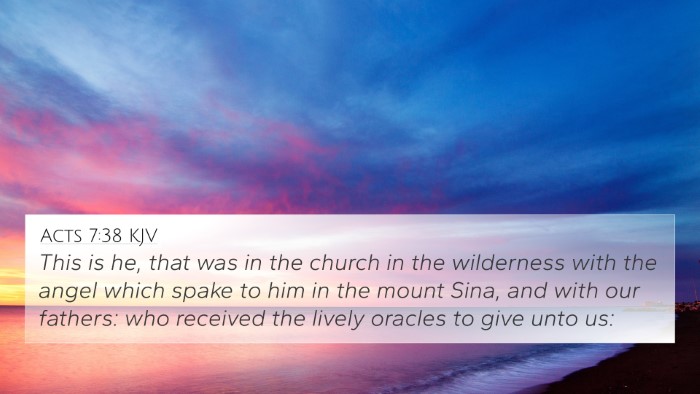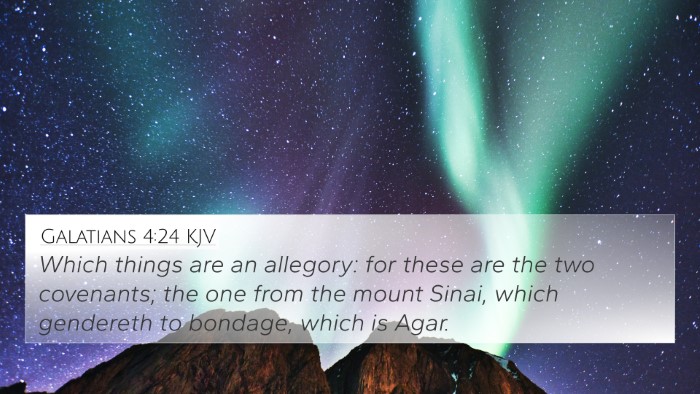Understanding Exodus 19:2
Exodus 19:2 states, "When the people set out from Rephidim, they came to the Sinai desert, and there Israel camped before the mountain." This verse marks a significant moment as the Israelites arrive at Mount Sinai, a pivotal location where God will deliver the Law to Moses and the people. The context of this verse is essential for understanding the broader narrative of God's covenant with Israel.
Contextual Significance
This verse occurs after the Israelites' miraculous escape from Egypt and their experiences in the wilderness. Matthew Henry notes that the arrival at Sinai was a preparatory step for receiving God’s commandments, highlighting God's desire to establish a covenant with His people.
Theological Insights
- Divine Encounter: The mountain symbolizes divine revelation and holiness. Adam Clarke emphasizes that approaching God requires reverence, elaborating on the need for purity before receiving His word.
- Covenant Community: The gathering of the Israelites indicates their collective identity and solidarity as a chosen people. Albert Barnes mentions that this communal aspect underscores the significance of their commitment to obey God’s laws after receiving them.
- Preparation for Revelation: The journey to Sinai sets the stage for an important transformation in the Israelites’ relationship with God. They are to transition from being slaves in Egypt to being a kingdom of priests and a holy nation.
Symbolic Representations
Mount Sinai is rich in symbolism:
- Holiness: The mountain represents God's holiness and the seriousness of His commandments.
- Separation: The physical distance from the base of the mountain signifies the separation between God’s purity and human sinfulness.
- Meeting Point: Sinai serves as a meeting point where God reveals His nature and expectations.
Cross-References to Exodus 19:2
The following verses provide a deeper understanding and relate closely to Exodus 19:2:
- Exodus 20:18-21: The people's reaction to God's presence illustrates the fear and reverence expected when approaching the Holy.
- Deuteronomy 5:2-3: This passage reaffirms the covenant made at Sinai, reminding the Israelites of their special status as God's chosen people.
- Hebrews 12:18-24: A key New Testament reference that compares the mountain that could be touched (Sinai) with the heavenly Mount Zion, indicating the shift to a new covenant.
- Matthew 5:1-2: Jesus teaches on a mountain, paralleling the significance of Sinai as a place of divine instruction.
- Psalms 68:17: A song of ascent that celebrates the presence of God among His people, hinting at the mountain experiences.
- Isaiah 2:2-3: Prophetic reference to the mountain of the Lord as a place where nations are drawn to learn His ways, resonating with Sinai's purpose.
- Galatians 4:24-26: Discusses the allegory of Sinai and its implications for New Testament believers.
- Acts 7:30-38: Stephen recounts God's revelation to Moses at Sinai, reiterating the significance of this moment in Israel's history.
- Romans 9:4-5: Affirms the significance of Israel as the nation to whom God gave the covenants.
- 2 Corinthians 3:7-11: Paul contrasts the glory of the old covenant given at Sinai with that of the new covenant in Christ.
Thematic Connections
Understanding the connections between Bible verses can deepen one's comprehension of the overarching narrative of Scripture:
- Law and Grace: The giving of the Law at Sinai signifies God's holiness and the human inability to fulfill that Law without grace.
- Covenant Relationships: The formation of the covenant community at Sinai is foundational for understanding God's ongoing relationship with humanity.
- Moses as a Mediator: The role of Moses in receiving and conveying God's law parallels the role of Christ as mediator of the new covenant.
Conclusion
Exodus 19:2 encapsulates a crucial juncture in Israel's journey, marking the transition from slavery to a covenant relationship with God. The arrival at Sinai not only sets the stage for receiving the Law but also signifies the importance of holiness, collective identity, and divine communication. By exploring cross-references and thematic connections, one can grasp the profound significance of this moment within the larger biblical narrative.
Tools for Further Study
For those interested in deeper Biblical studies and cross-referencing:
- Utilize a Bible concordance to find related verses and themes.
- Refer to a Bible cross-reference guide for exploring connections between Old and New Testament passages.
- Employ cross-referencing Bible study methods to enhance your understanding of scripture.
- Consider using comprehensive Bible cross-reference materials for in-depth exploration of themes.
